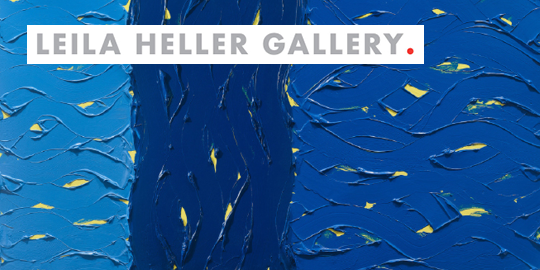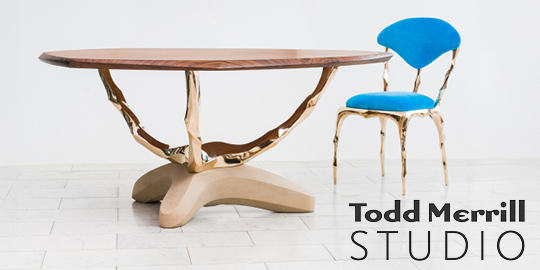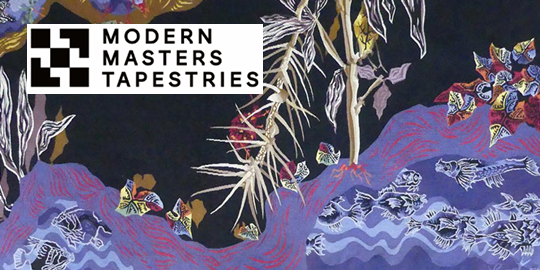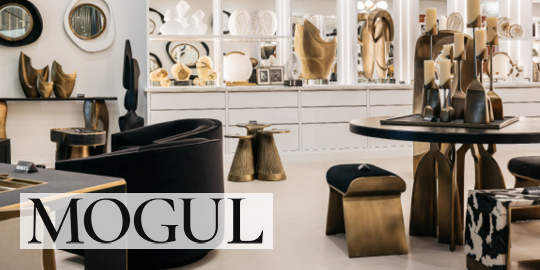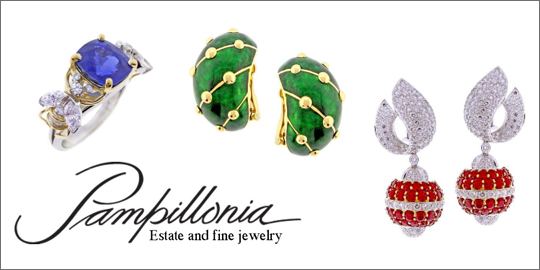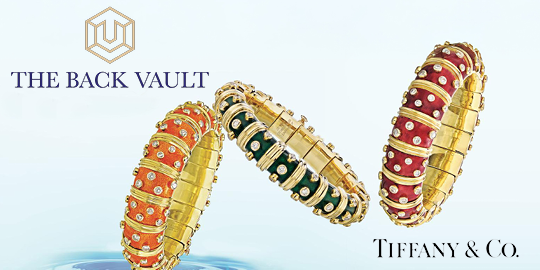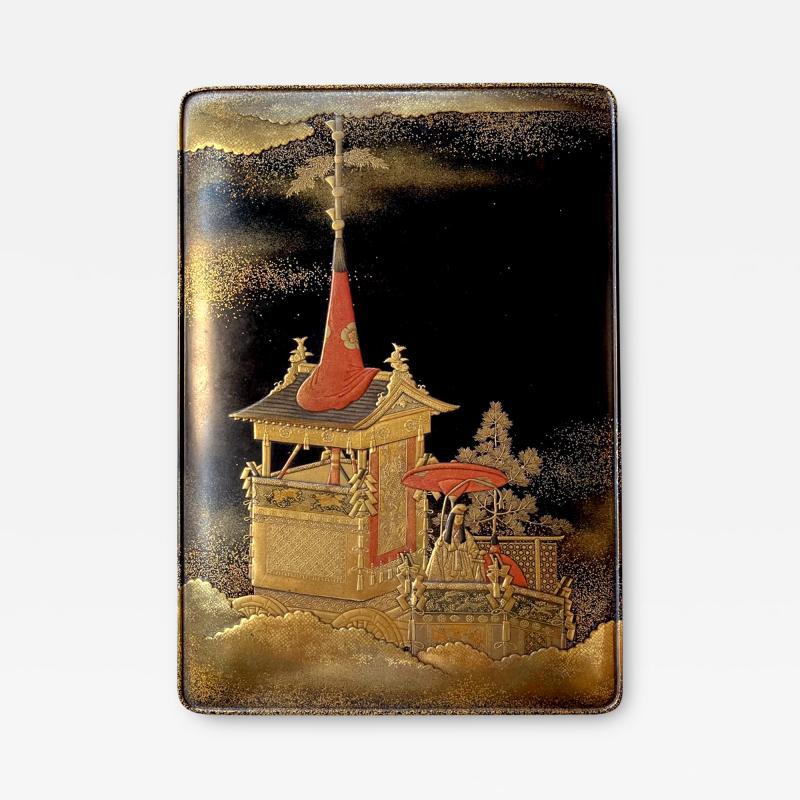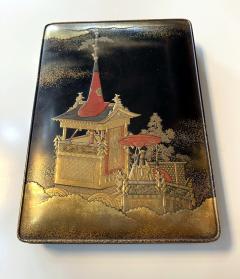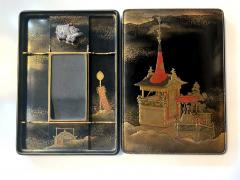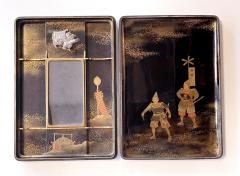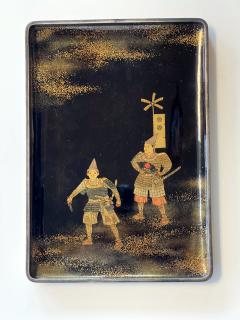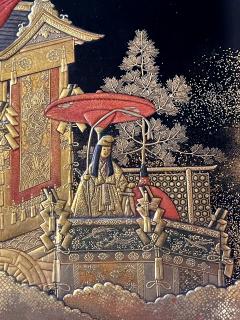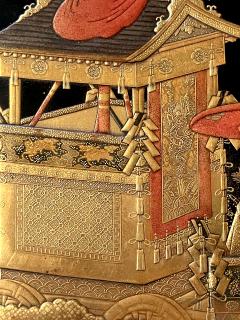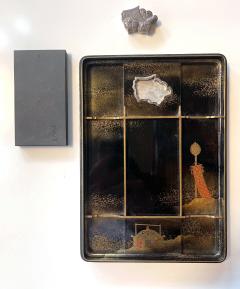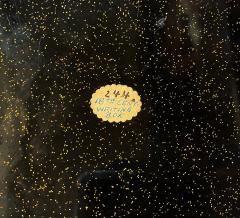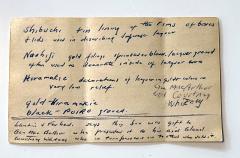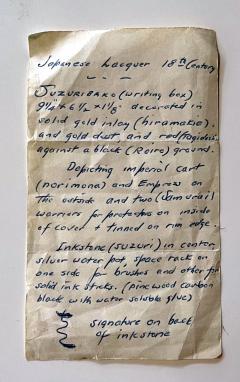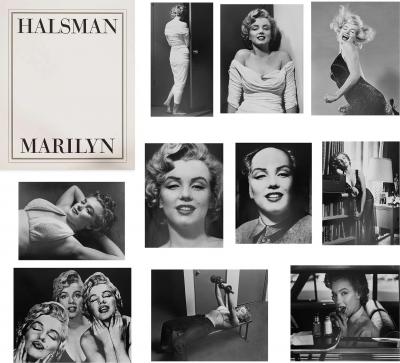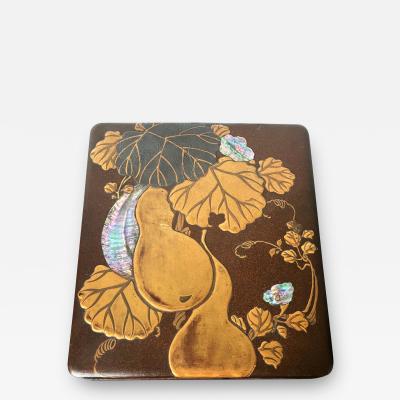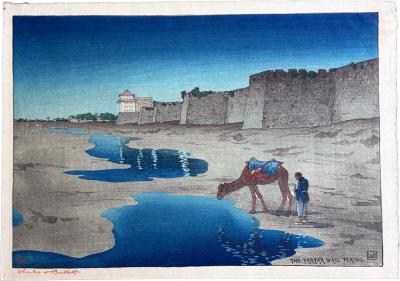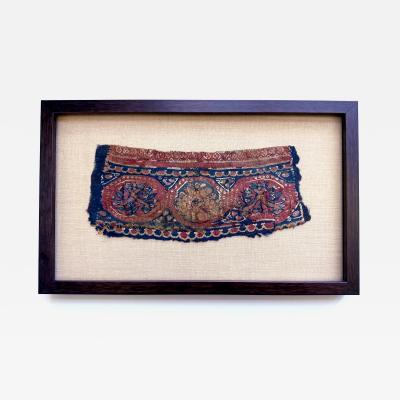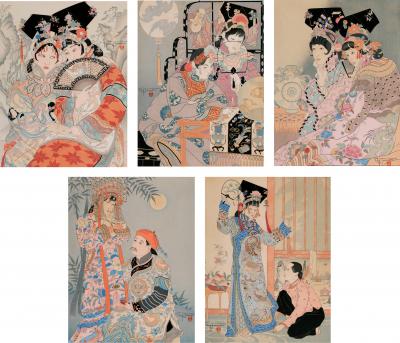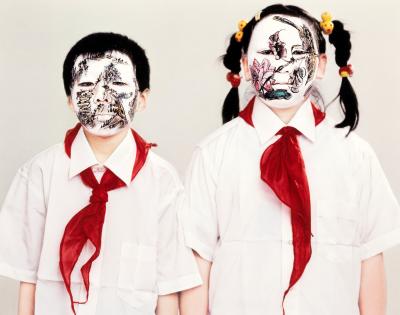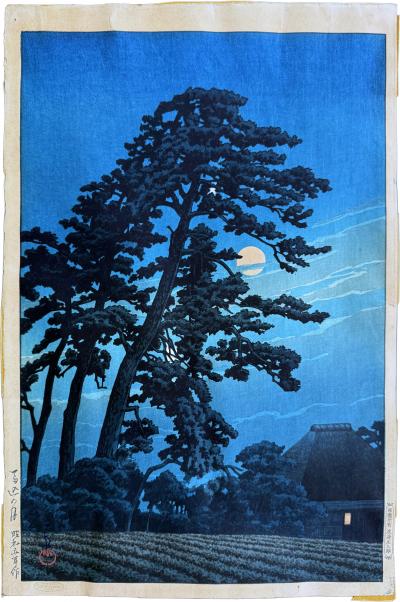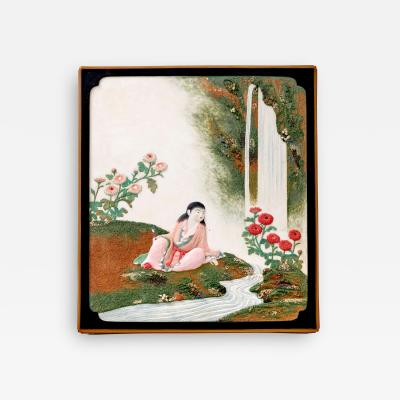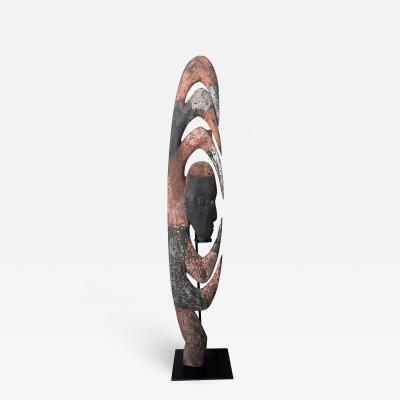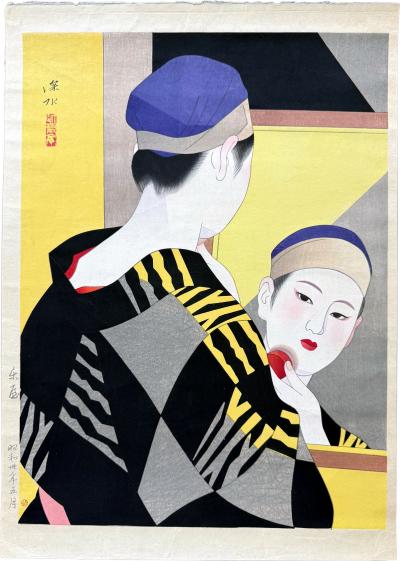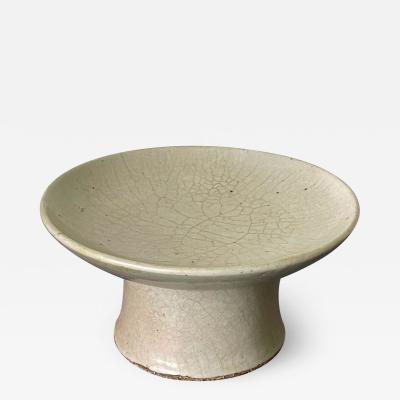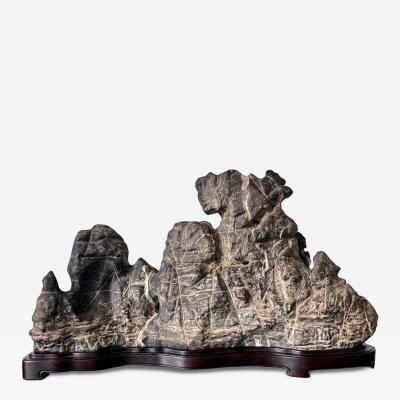Exceptional Japanese Lacquer Suzuribako Edo Period with Provenance Note
-
Description
An exceptional Japanese suzuribako (writing box) in maki-e decoration circa 18th century Edo period. This is one of the most spectacular pieces of Japanese lacquer art offered by our gallery. The decorative theme is Gion Matsuri Festival that annually takes place in Kyoto from July 17th to 24th. It is known for the Yamanbako Junko parade with lavished decorated floats. The very first and also the most spiritually important one is called Naginata Boko, the Long Sword Float. It is characterized by a very tall naginata halberd sword on the top of its central pole. The sword was attributed to the legendary swordsmith Sanjo Munechika in the 10th century and it is believed to possess mystical power to ward off the evil, such as the plagues (as the festival commenced originally), and also to protect and to heal. It is the float where the chosen ceremonial Chigo, the celestial child, ride in the front. This Naginata float with Chigo is the subject depicted in a tour-de-force manner on the lid. The details were astonishingly superb, reflecting a masterful workmanship, and more evidently, a will to bring out the best possible result within the limit of the techniques. Using Takamaki-e to outline the design that appears to jump out of the Nuri background, every micro-space was painstakingly decorated often with fine reliefs. From the surface panel and the hanging tapestry of the float, to the textured drapery down the pole, to the robes of the Chigo and even his expression, nothing was overlooked. The vermillion color was used ever so effectively to highlight a few places such as the umbrella, the pole fabric and the border of the drapery, rendering a regal and nearly somber sense to the festivity. Hiramaki-e and Kirigane gold foil inlays were used throughout as well, often on top of the Takamaki-e. The artist chose black as a background and he only decorated sparsely with clouds using Takamaki-e, Hiramakie (high and low relief) in a masterful contrast with Togidashi, creating a dimensional and mythical canvas for the float.
The festival continues to the interior. On the back of the lid, two samurai like men on foot stand under a banner. They were likely spectators or members of the float entourage. They have on full suits of armor with sword at their waist. One holds a fan and the other likely a scroll, and both don conical hats. The detailed workmanship is again at play here. One can count the pieces of their armor scales and the stripes of their sandal ties. Most peculiarly, they both bear a facial expression that is hard for the viewers to interpret, somewhat somber and dignified, to intimidate or to evoke respect, it is hard to say. The decoration then continues on to the interior base, where a partial view of banner and another pavilion-like float reveal through the cloud made in gold sparkled Togidashi. There are separate compartments that hold the ink stone and the silver suiteki water dropper in the shape of a partially open scroll surrounded by three blooms. The inkstone bears a mark on the back. The bottom of the suzuribako is Nuri sparsely sprinkled with gold power and retains an old collecting paper sticker. The rim of the lid is lined with a very thin silver metal.
Accompany this stunning piece are two handwritten notes of certain age. One is the study of the subject which appears now somewhat imprecise. The other paper bears an interesting note of the provenance, claiming that the piece was gifted to General Douglas MacArthur (1880-1964), who then presented to his aid Colonel Courtney Whitney (1897-1969), a lawyer and US Army commander during World War II who later served as a senior official during the US occupation of Japan (1945-1951). He then presented to the others who later sold it. -
More Information
Origin: Japan Period: 18th Century Materials: lacquer, wood, silver, stone Condition: Good. Wear consistent with age and use. Very fine condition with minimal wear such as the base due to contact, as shown. Creation Date: 18th century Styles / Movements: Bespoke, Asian, Traditional Patterns: Asian/Oriental, Geometric, Handmade Incollect Reference #: 443261 -
Dimensions
W. 9 in; H. 1.5 in; Diam. 10 in; W. 22.86 cm; H. 3.81 cm; Diam. 25.4 cm;
Message from Seller:
Tishu, based in Atlanta, GA, offers a diverse collection ranging from Neolithic art to 20th-century collectibles, with a focus on Mid-century design, Japanese and Korean art, Asian textiles, and Contemporary Aboriginal art. Driven by a passion for timeless beauty, the gallery is open by appointment only and offers works that span 5,000 years of history. Reach them at 305-400-0561 or tishu@tishugallery.com.
Sold


